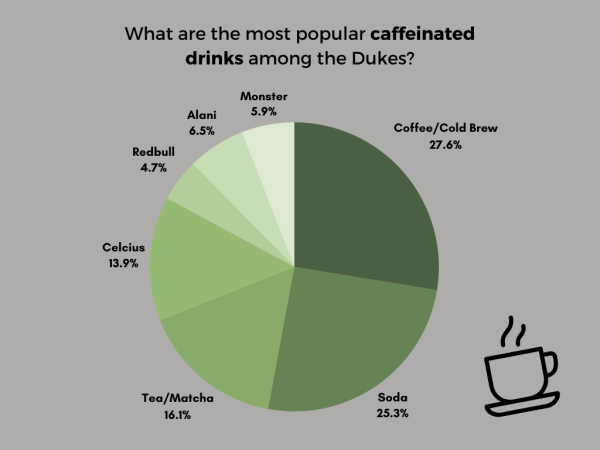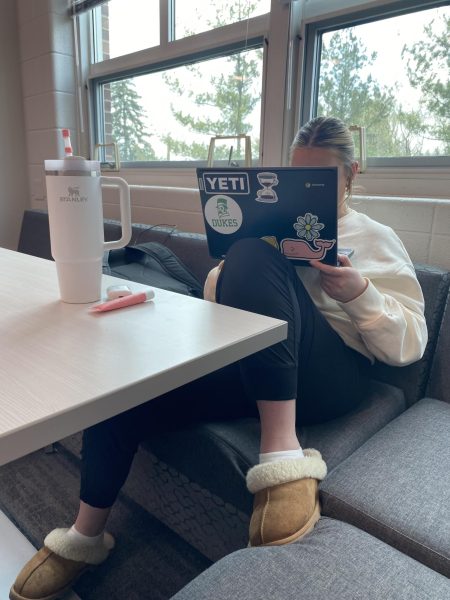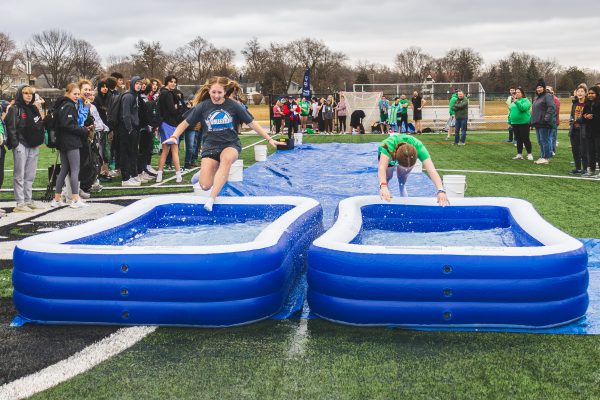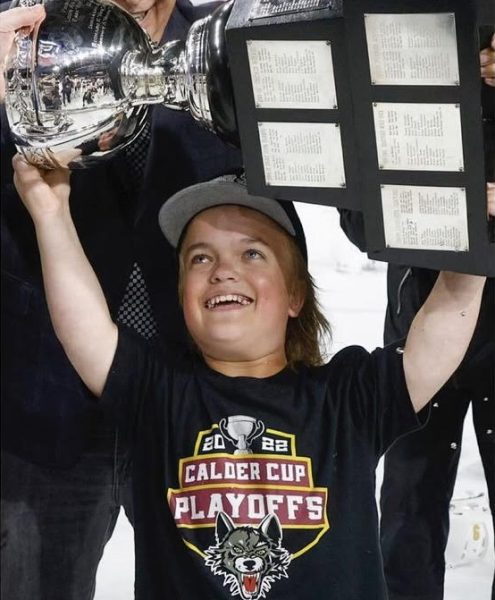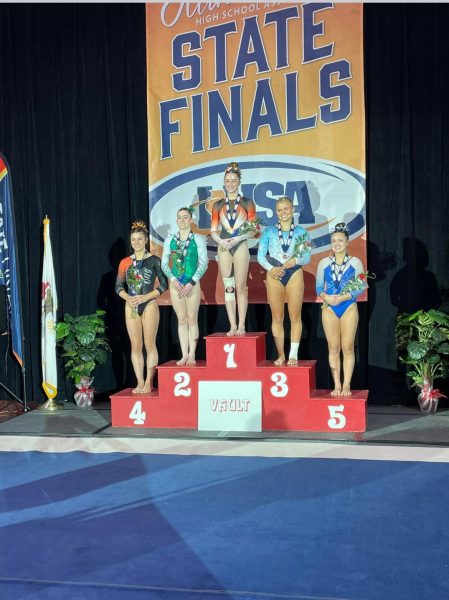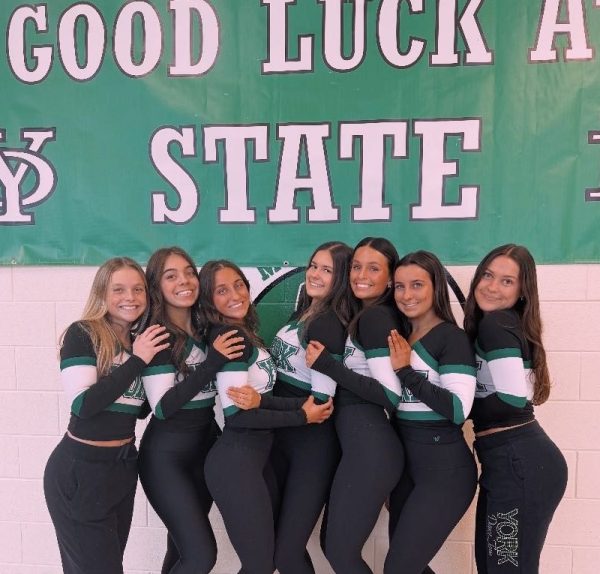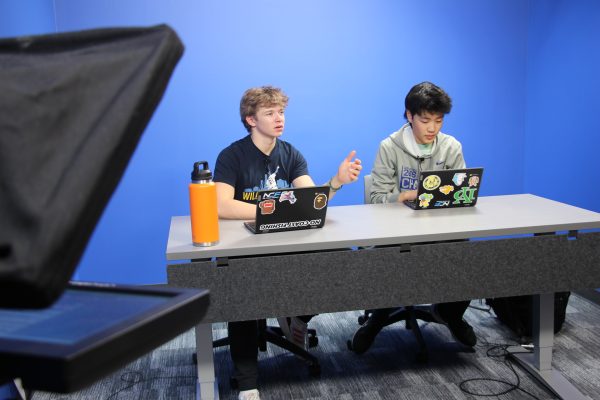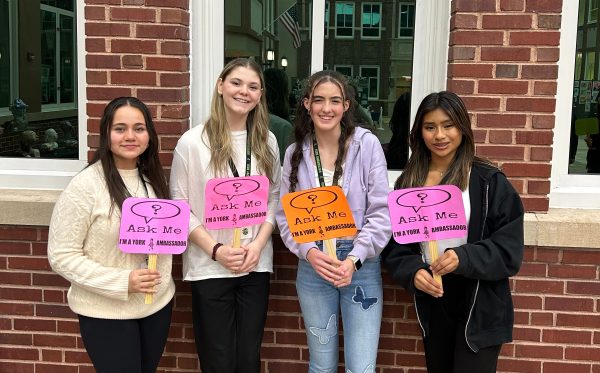York “flips” out for new teaching style
Recently, several York teachers have “flipped” their classrooms, and many York students are crazy for it.
A flipped classroom does exactly what the name says it does, it flips traditional teaching style. This means that students learn the lesson at night, usually through a podcast or YouTube video, and then come in and do “homework” in the classroom during the day.
Susan Brown, the head of York’s math department, believes the flipped classroom has an advantage to different types of classrooms.
“It is particularly fitting for a topic involving a complicated procedure because students can repeat the video to work on understanding the big picture and catching all the details.”
The flipped classroom got its start in 2007 when teachers Jonathan Bergman and Aaron Sams decided to record their lectures for absent students in their Woodland Park, Colorado high school. The taped lectures were a success. Once word got around, Bergman and Sams were asked to speak to teachers across the country. The initiative took off, and now it is being used all over the United States.
York has been using this teaching style for several years, and it has been very well received by students. Ellie Fitzpatrick, a senior in precalculus, appreciates the extra time the flipped classroom provides.
“I believe the flipped classroom setting allows students to spend more time to focus on harder lessons,” said Fitzpatrick. “It also allows collaboration in class with other students and is not very time consuming.”
Senior Alan Krance, also in a precalculus flipped classroom, agrees.
Krance said, “I believe learning lessons outside of the classroom is convenient because it doesn’t take much time out of my day, also having time in class to work on problems with other students is helpful to get things correct.”
Having access to a video lecture has been popular ever since Khan Academy got started in September of 2006 when Salman Khan witnessed success in tutoring his cousin who lived across the country from him. Khan Academy is a free website that has nearly 2500 videos on diverse subjects serving everyone from kindergarteners to calculus students.
Brown has found the flipped format to be particularly helpful for seniors, whether they are calculus students or not.
“The flipped approach has a special advantage: it is a good preparation for college, where many professors teach by lecturing,” Brown commented. “A flipped lesson gives students practice in taking notes while listening closely.”
Leslie Stipe, a precalculus honors, AP calculus AB, and business math teacher, also thinks the style is great for students.
“Students are in charge and they take more initiative,” said Stipe. When I lecture, I feel as though I am doing all the work. I have turned most of the work over to them [students]. My time is better spent interacting with students in class. I am a facilitator, not a lecturer.”
In addition to the math department partaking in the flipped classroom initiative, there are a few others classes that have also decided to switch it up. An honors chemistry class was flipped a couple years ago as well as some government and economics classes.
Based on the number of classes that decided to take on a flipped classroom, it seems like York is generally pretty supportive of the style. It isn’t always easy though. There is a lot that goes into preparing for a flipped classroom on the teacher’s part. There are both pros and cons to the classroom, and Stipe first provided a couple examples of the pros.
“Students work at their own pace,” Stipe commented. “They are less stressed, less homework for them, and they have the ability to rewind and repeat if they need to.” Stipe also added, “Students who miss class don’t fall behind. They can watch videos from home.”
While there were very few, the cons were still present.
Stipe said, “[I spend] so much time making videos! Some kids don’t watch the videos — then in class they watch them, and waste [the] time [in which] they should be doing work.”
The pros definitely outweigh the cons, and it seems the flipped classroom is here to stay. Stipe even said she wants to eventually flip her AP calculus class when she “can find the time to make the videos.”
Overall, the flipped classroom is a successful initiative York has been able to put into play, and Fitzpatrick sums it up very well.
She said, “After years of being taught in different ways, I definitely think the flipped classroom is the best teaching method I have ever learned from!”




